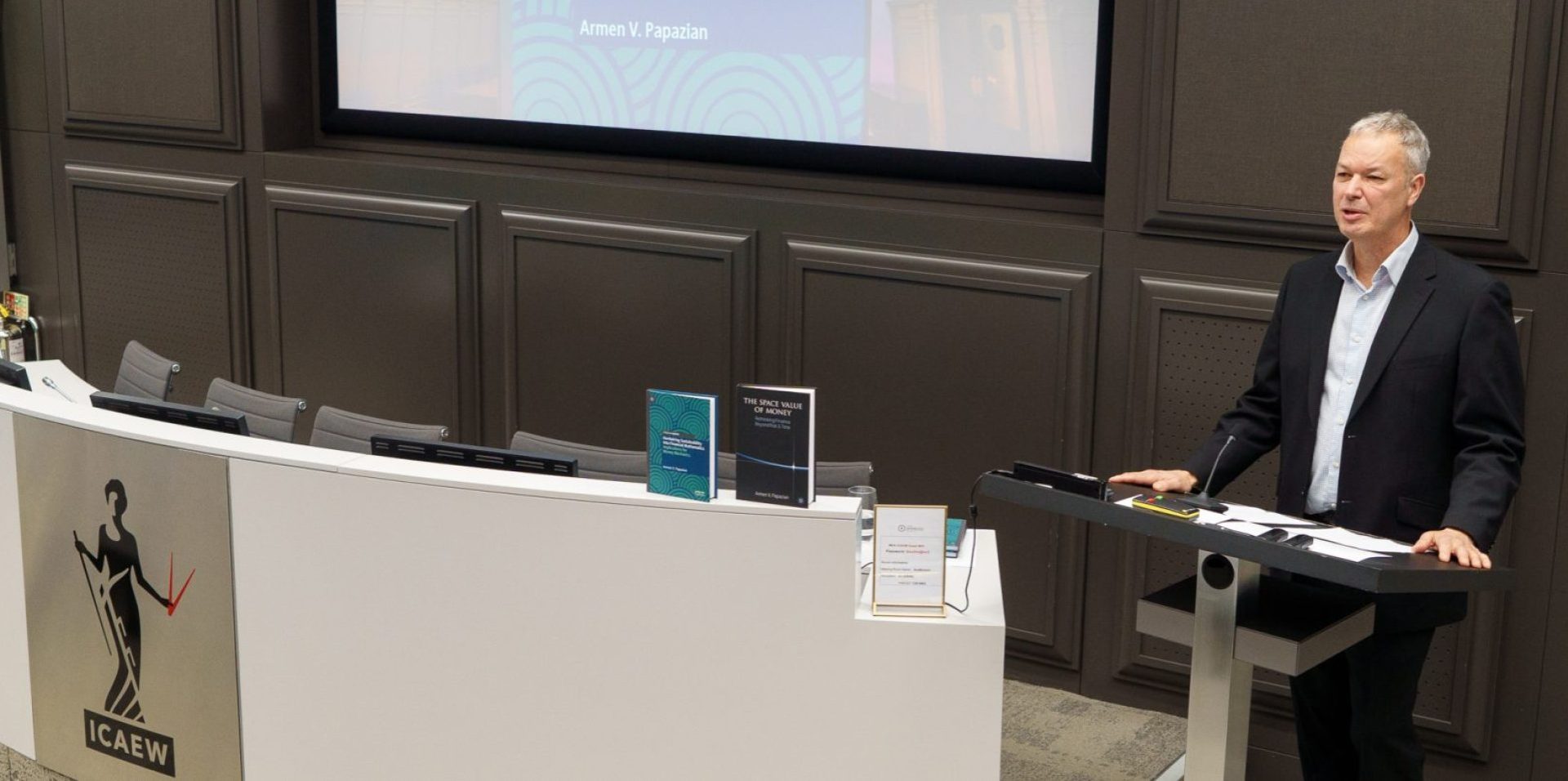Space Value Foundation offers its consulting services to public and private institutions in three specific lines of sustainability activity: framework and reporting architecture development and authentic space impact measurement.
Framework Development
We support our clients in the development of public or private institutional or country level tailored sustainability and sustainable finance frameworks aligned with key global frameworks and standards.
# Reporting requirements: IFRS, ESRS, SEC
# Reporting frameworks: TCFD, TNFD, K-MGBF, TPT
# Building an integrated capability: Seamless Measurement and Reporting Systems
Space Value Assessment
We support our clients in the assessment and reporting of the actual multi-layered and multidimensional space impact of their Value chains, Organisation, Projects, Investments, and Portfolios.
We design and execute a detailed investigation of the multi-layered and multidimensional space impact of your productive value chain.
This involves a thorough analysis and mapping focused on the good or service your company or organisation creates and/or provides.
All Space Value Assessment mandates can be expanded into internal capability and architecture build up that provides a platform for future assessment and reporting.
We design and execute a detailed investigation of the multi-layered and multidimensional space impact of your entire organisation.
This service differs from a value chain assessment because the latter is focused on mapping your good or service, not necessarily the entire organisation.
All Space Value Assessment mandates can be expanded into internal capability and architecture build up that provides a platform for future assessment and reporting.
We design and execute a detailed investigation of the multi-layered and multidimensional space impact of a project.
This involves a thorough analysis and mapping focused on the project itself, whether real estate or any other. It does not include the mapping of project partners and their value chains.
All Space Value Assessment mandates can be expanded into internal capability and architecture build up that provides a platform for future assessment and reporting.
We design and execute a detailed investigation of the multi-layered and multidimensional space impact of your investments, whether actual or potential, covering a whole range of opportunities, including private equity investments.
This involves a thorough analysis and mapping focused on the investment opportunity, and does not include any assessment of the investor organisation or its value chain.
All Space Value Assessment mandates can be expanded into internal capability and architecture build up that provides a platform for future assessment and reporting.
We design and execute a detailed investigation of the multi-layered and multidimensional space impact of your investment portfolios, whether actual or potential, covering a whole range of opportunities, including public and private equity investments.
This involves a thorough analysis and mapping focused on the portfolio being considered, and does not include any assessment of the investor organisation or its value chain.
However, the portfolio assessment does involve an individual company and value chain assessment for all assets in the portfolio.
All Space Value Assessment mandates can be expanded into internal capability and architecture build up that provides a platform for future assessment and reporting.
Our Process
Our process begins with internal and external investigation and research that establishes a detailed space profile of the assessed entity (for all of the above). We then go through a comprehensive space mapping of the value chain involved.
Next, we quantify space impact looking at the many aspects of impact: planetary, human, and economic. The final stage of assessment involves the integration of impact into value and the conceptual projections of impact-adjusted returns. We provide an authentic strategic and tactical tool for those committed to their sustainability and their footprint.
Benefits to You
A Space Value Assessment (SVA) is a unique and useful tool for those serious and committed to sustainability beyond rhetoric. It allows organisations a deeper understanding of their own impact, and the opportunity to rectify and improve their footprint accordingly.
SVA is not just about emissions, it considers many forms and types of pollution and biodiversity. It is about impact on all layers of space the organisation or project operates in or affects. It is also not just about negative impacts; it considers positive value creation as well.
Impact Assessment
For many decades, organisations and firms have had to focus on their financial accounts, profit and loss statements and bottom line. Neither markets nor investors nor regulators required them to assess their multifaceted impact. Financial accounts and models have never required a detailed impact assessment.
Climate-related disclosures, and soon nature-related disclosure, are becoming an important requirement across markets. However, they are still voluntary frameworks (like TCFD and TNFD), and many organisations still lack the internal architecture and tools to account for them.
Most importantly, none of the climate and/or nature related frameworks and standards actually consider a multi-layered space context. They do not offer models that can integrate impact measurement with existing cash flow models.
This is where we come in.
Why SVF?
Space Value Foundation applies a unique framework and methodology which goes far beyond and much deeper than the recently popularised ESG (Environmental, Social, and Governance) integration and reporting approach.
The Space Value framework looks at impact without prejudging and limiting it to three categories like E, S, and G. We look at all layers of space where the organisation or investment operates or affects. We link and plug into existing financial models and equations seamlessly, allowing a transparent and authentic integration of impact.
We do not ‘score’ or ‘rate’. We instead measure multi-layered and multidimensional space impact. We provide the tools for their integration into accounts and models, which allow and lead to organisation strategy and practice improvements when necessary.
Real and Multi-Layered Impact
Space Value Foundation applies a unique framework and methodology that includes ESG (Environmental, Social, and Governance) integration and reporting approach.
The SV Assessment maps the impact of our clients or their projects and portfolios across all the space layers they operate in or affect. This is important.
Because the value chains of investments affect different layers of space differently.
Two shipping companies based in New York, one transports its cargo with aeroplanes and the other with ships. One affects the hydrosphere and the other the stratosphere. We need a framework that recognises this difference in the layers of space different value chains affect.
Because the intensity of impact differs across space layers.
GHG emissions in the stratosphere do not have an identical impact to GHG emissions on the surface of the planet. The impact of GHG emissions in overcrowded cities differs from the impact of GHG emissions in open fields.
Because cleaning the same pollutant in different space layers involves different technologies.
Cleaning plastic waste from our oceans, from our rivers, from our streets, and from our food chain require entirely different technologies. Cleaning the carbon from the air and cleaning the debris in orbit require entirely different technological toolkits still to be invented.
Given all of the above, the costs of impact differ across different layers of space, even for the same pollutant or type of waste.
Space impact mapping and assessment within the SV Framework is much deeper, multi-layered, and more authentic to the value chain being considered.
How Do We Start?
We start with a conversation to understand your aims and goals.
Our purpose is to help your organisation rethink and redesign the tools through which you measure and map the space impact of your investments and/or value chain, building the necessary architecture and platform for a self-sufficient and efficient assessment and reporting moving forward.
info@spacevaluefoundation.com

